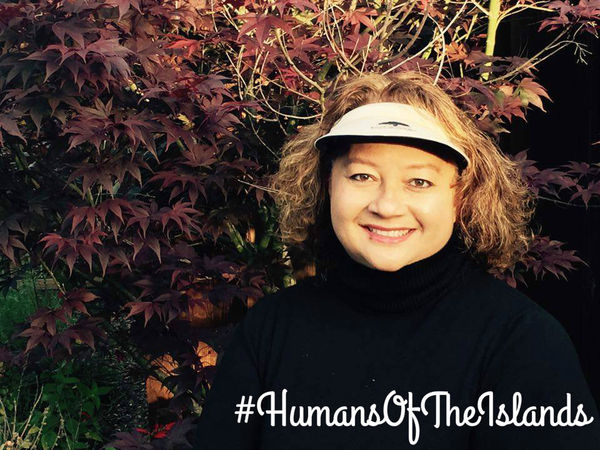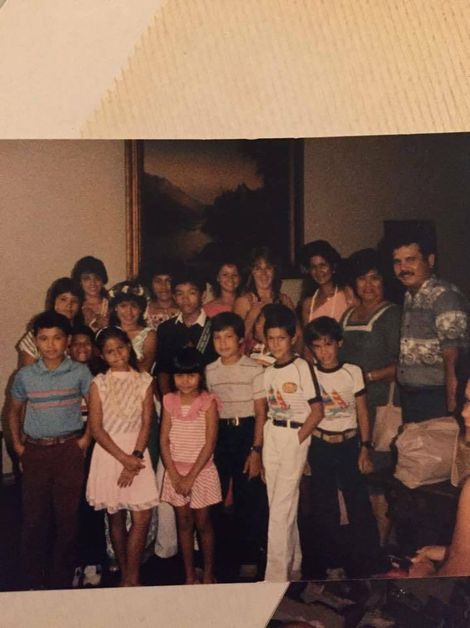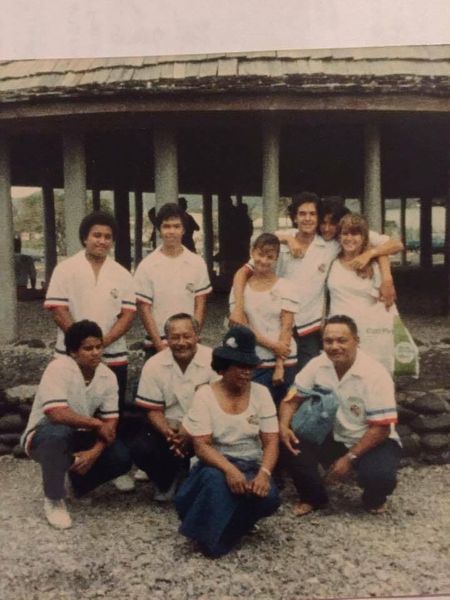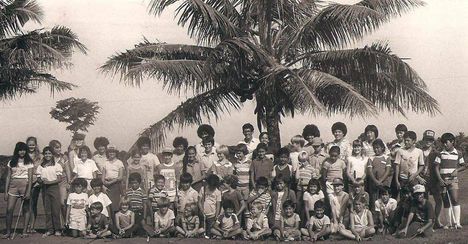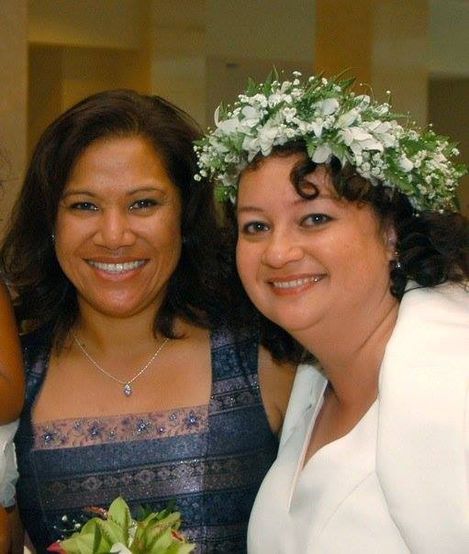Mara Liske
Former Professional Golfer
American Samoan
I grew up Pago Pago in Tutuila, American Samoa. I moved to California, United States in my Junior Year in High School and it's been my home ever since. I'm now married to a 'Californian'.
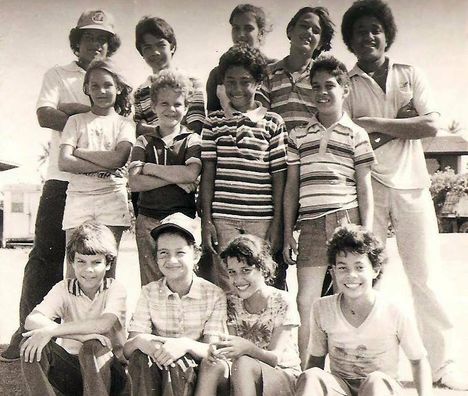
What was it like for you moving to the United States as a teenager after growing up in the Islands?
For me the real challenging part was that we were missing Grandparents, cousins, Aunties - the whole extended family. Just everything that you know. And in terms of a culture shock - the U.S. is highly individualistic so people think in terms of what's best for them but I came from a culture where people think about what's best for all and individual needs are secondary. It was cold (laughs). In American Samoa we grew up swimming at the beach, the waterfall - but the ocean on the West Coast in Cali ...umm disappointing and very cold (laugh). I missed everything. I missed food, I missed family, the sense of humour, I missed the community - moving here was very lonely. Aside from having my Mother who was wonderful and a very strong woman, I had to still find my way in this culture. And golf was a bridge for me.
1985 San Diego Jr World team from Pago Pago American Samoa
How did you start playing golf?
In Pago, Tutuila - there was a man, Tolani Teleso, he had returned back from the military and he brought and developed this amazing Junior golf program. And he basically made it accessible for - probably anywhere between about 50 to 100 kids in my generation. So he provided a place for us to play everyday in exchange that we might have to go and pick up all the balls that were sailed. But we learned invaluable lessons through him and this program. So that's how I got started.
1983 South Pacific Games men's and women' golf team from Pago Pago American Samoa
And there were several of us that went on to play Collegiate golf, I knew of one of the other boys who later turned professional. It opened up opportunities for kids who may not have otherwise had opportunities to play golf or use golf as a vehicle for education, as a vocation, a profession - and for me that sort of filled all those boxes. And then golf as a social thing as well. In my case, having come from Samoa to a different culture, I was able to relate and socially be involved with people that I met at the golf course and develop friendships with.
1982 Junior Golf program taught by Tolani Teleso
When you continued to play golf in the U.S. were people there shocked that you had come from the Islands and knowing how to play (and play well)?
(laughs) Yeah they were. For one, they'd never heard of Samoa - they mistook it for Somalia. When I landed in the U.S. immediately my Mother got me involved in the local junior golf program and I started playing at tournaments pretty quickly. Once you play competitive Junior golf, you sort of know who your competition is. But in this case, I sort of dropped out of nowhere and I was placing or winning tournaments. So I was lucky enough to have that ability and also the membership to play golf at a golf club. So it opened up doors for me. And then of course I had to work, my parents were not wealthy and we had to support ourselves and so if I wanted to play golf, I had to work in a golf course. And I enjoyed working there and it was a pretty wonderful experience for me.
Alongside already being a cultural minority, what was it like for you as a woman, playing in a male-dominated sport?
Along the way you always feel it. I was the only girl in the golf team in high school. I was normally the only girl at the golf course. Every where you go you tend to be the only female. And that's changed of course now but in my time, I normally was the exception. I grew up with brothers and cousins so I was very comfortable being in a male situation I suppose, and golf did open doors for me. It allowed me to make friends, work at a golf course, pursue professional options as to whether tour as a professional or to work as a professional golfer. Initially there might've been some discomfort for some men, but not all.
When I was a golf professional I was playing with some friends who were also golf pro's and we went to a private club and on that particular day it was 'Men's day' so women weren't allowed on the golf course. We had driven about 2 and a half hours to get this location. So I had to put my hair up in a cap and sort of pretend I wasn't a girl. And that was during the transition when Golf was starting to make big changes and they were seeing the value of women in the golf profession. As soon as we were done we were asked to quickly leave because it was 'Men's' day.
There were also 'Men's areas' in clubs and I would accidentally walk into the Men's private areas looking for the bathroom, obviously there weren't any Women's bathrooms in there. Back then I was told that these were Men's only areas so there were those little things that you noticed that you didn't realise existed. That is something I learnt about coming to the U.S. there were these separations.
The other thing was the experience for me working in an environment where there were no other women working at the golf club at the time. I was just turning 16 then. They usually had girls apply for jobs out on the course where you sell candy and drinks. I felt I had more to offer in the golf shop. And so my experience there initially was that it was very much a 'boys club'. But overtime I developed these strong friendships and working relationships in that environment. And so the nude photos of playboy quickly came down form the golf shop and some of the coarse language was scaled back and over time I started to become not just a working professional but also a friend and these were people, I considered them family. So just the transition from this awkward playboy pinups in the golf shop or behind the desk evolved into an environment where you'd be okay to have your daughter work there.
So your career in competing involved you playing in the South Pacific Games?
Yes, at the time I had just finsihed 8th grade. I was about 12 or 13. I had qualified to play with a touring group that played at the golf meet. And 4 out of 5 members of that team were from the Junior golf program. So in terms of our ability within a 5-10 year period - Solagi Teleso - who I just think is so important to pay homage to the people who made that opportunity possible. He developed this Junior golf program which opened up doors for all of us. Some went on to play College golf - myself included. And just a handful of us may have played professionally later on.
I was selected into the Junior World Golf team competing in San Diego, California. I won 1st place out of all International Countries (1980 through 1984) and placed 3rd in the Junior World rankings in 1982.
When I moved to California in 1985 I continued to compete as an amateur golfer and for 15 years, I worked at Sunol Valley Golf Club. I also played on the Women' San Jose State golf team.
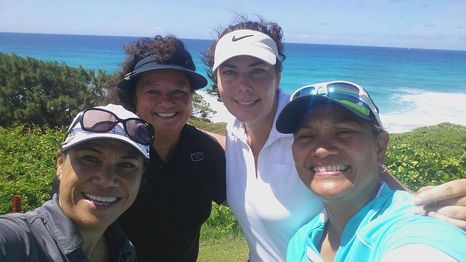
And what are you doing currently?
I went on to work in Corporate America for AT&T, then Edward Jones as a Financial Advisor managing assets for clients. I also enjoyed building and developing property which is what I currently do, manage a vacation rental property and beginning a new passion for writing and producing a trailer for a film based on the life story of a Samoan woman from Lauli'i, Samoa in the mid to late 1880s.
So after leaving the golf business later, I went on to work in Corporate America for AT&T, then Edward Jones as a Financial Advisor managing assets for clients. I also enjoyed building and developing property which is what I currently do. But currently I'm staring a new path as a writer. So I'm in this early phase right now and basically I'm working on writing and producing a trailer for a film based on the life story of a Samoan woman from Lauli'i, Samoa in the mid to late 1880s. She is my great great grandmother and I feel a very strong connection to her on many levels. For one, she left Samoa when she was a teenager, very close to the same age as I was when I moved. She landed in San Fransisco and lived with a palagi american husband (in the 1800's). She does eventually write a book called 'Daughter Of Samoa' ---lauglilll...describing the Samoan culture and the Samoan people. She tries to create alliances with America or a super power that can honour the culture and allow Samoan people to coexist with the changes of Colonialism.
When I read through her book, it is well written and her voice is very clear. But the editor...pieces of the book are a little bit jumbled. She was a young woman who had a son and her husband was a builder in the bay area. So she does go through struggles. From my understanding she had a friendship and relationship with Robert Louis Stevens. She lived in America for another year or two and struggled during that time and then returned home and I heard that she and Robert and Fanny would have these discussions about Politics and the future of Samoa and the Matai system and the culture. So those things resonate for me. Her and her husband had challenges and her life wasn't that easy but she always seemed to rise above her circumstances and she did return home with her son.
In the chronicle in my research, she was the only Samoan woman in America at the time and the very first Samoan woman in America who lived there. And so she goes through her own challenges as a brown woman during that time period. So I'm working on that.
Is that quite inspiring for you as a woman to write about such a great legacy from another Island woman navigating the challenges you also faced?
It does. Even if you are not living in Samoa - there is a part of you that is always missing. I feel it and when I read her story and I read some of the things that she writes, I totally understand that longing to be home and surrounded by family and that culture that is so special in the world and i think until you leave it and you no longer have it with you daily, you realize how much it is part of who you are.
By Indira Stewart
